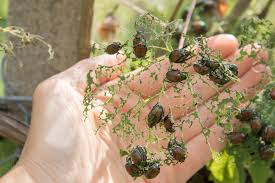This article examines surveillance or pest scouting, detailing its role in monitoring pest populations and guiding control decisions in agricultural systems.
Introduction to Pest Surveillance in Agriculture
The watch kept on a pest for determination of population density, dispersion, and dynamics is called surveillance or pest scouting.
A grower gains knowledge of pest populations only through pest scouting, which informs whether a pest has reached the economic injury level, indicating whether spraying is necessary.
Definition of Surveillance and Pest Scouting in Agriculture
The watch kept on a pest for determination of population density, dispersion, and dynamics is called surveillance or pest scouting.
A grower obtains knowledge of pest populations solely through pest scouting, enabling assessment of whether a pest has reached the economic injury level, determining if spraying is required.
Read Also: Home-made Catfish Feed Vs Bagged Feed, Find out the Best
Crop Scouting in Agricultural Integrated Pest Management

Crop scouting is the process of precisely assessing pest pressure, typically from insects, and crop performance to evaluate economic risks from pest infestations and diseases, as well as to determine the potential effectiveness of control interventions.
Scouting is often a commercial service within Integrated Pest Management, enhanced by tools like specialized field instruments and GPS-enabled handheld computers for geotagging crop issues.
Advanced scouting systems allow growers and consultants to locate, tag, and visualize crop problems on aerial maps, facilitating site-specific treatments.
Preparation is essential before scouting to ensure accurate, efficient information. As an Integrated Pest Management strategy, crop scouting evaluates environmental conditions, beneficial insects, pest insects, diseases, weeds, crop growth stage, and overall crop health to provide a comprehensive view of issues.
Field and landscape characteristics, influencing pest distribution, symptom expression, crop injury, and recovery, necessitate a complete field history for effective management planning.
Scouting frequency depends on crop type, life cycle stage, pest presence, pest life cycles, and weather conditions. Field visits should ensure crop establishment, healthy growth, avoidance of population bottlenecks, and prevention of pests surpassing economic thresholds.
After crops reach specific developmental stages, visit frequency can decrease, but problem fields require strict monitoring.
Read Also: The Best Fish Feeds for Catfish and Formulation Guide
Sampling Strategies in Agricultural Pest Scouting

Since surveying an entire field population is time-intensive, sample populations are used for quick, efficient data collection. Sampling patterns are randomized to ensure equal sampling chances across field subdivisions.
Restrictions correct oversampling errors and ensure all areas are sampled. Common randomized patterns include predetermined zigzag or M-shaped routes through rectangular fields.
For irregular fields, field-specific routes ensure every subdivision is visited. Scouting field edges is avoided unless targeting specific pests, as it does not reflect whole-field conditions.
Methods of Pest Scouting in Agricultural Fields
Various pest scouting methods exist, with the most notable including:
- Maryo’s Method
- Diagonal Method
- Zig Zag Method
Common randomized patterns include predetermined zigzag or M-shaped routes through rectangular fields. Routes for irregular fields are designed to visit every subdivision, ensuring field-specific, comprehensive coverage.
Do you have any questions, suggestions, or contributions? If so, please feel free to use the comment box below to share your thoughts. We also encourage you to kindly share this information with others who might benefit from it. Since we can’t reach everyone at once, we truly appreciate your help in spreading the word. Thank you so much for your support and for sharing!

